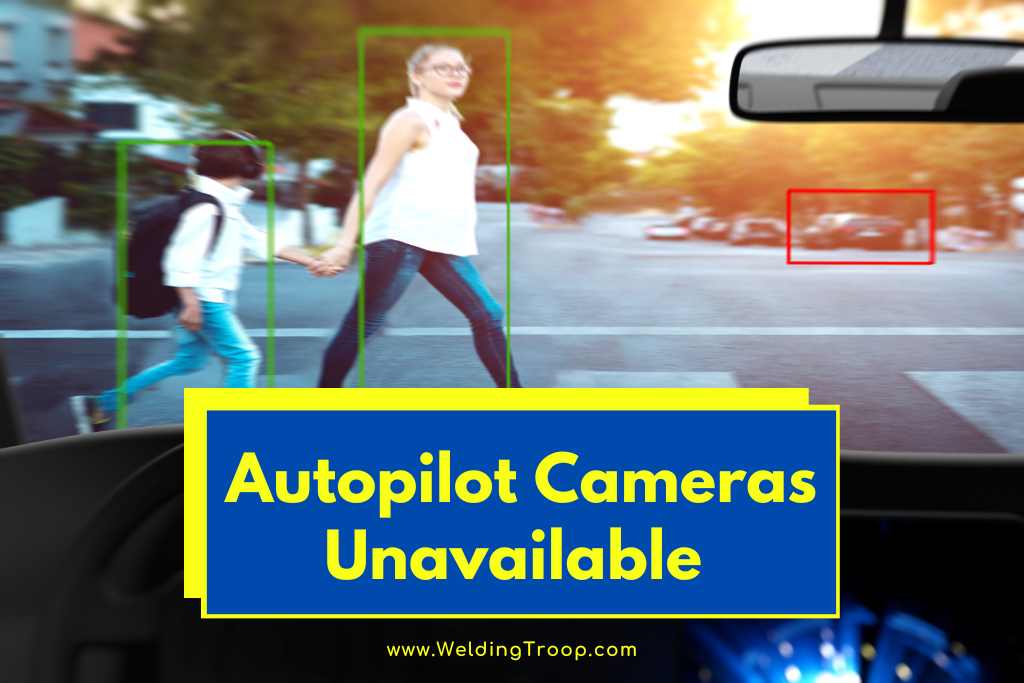Tesla’s Autopilot system has revolutionized the driving experience with its advanced driver-assistance features. However, some Tesla owners have reported encountering an issue where the Autopilot cameras become unavailable.
This can result in disabled Autosteer, reduced visibility of surrounding cars, and other limitations. In this comprehensive guide, we will explore the causes of Autopilot Cameras Unavailability, its impact on Tesla’s Autopilot features, and provide troubleshooting techniques to resolve the issue. Let’s dive in!
Table of Contents
Causes of Autopilot Cameras Unavailability
Sensor Obstruction
One common cause of Autopilot Cameras Unavailability in Tesla vehicles is sensor obstruction.
Dirt, mud, or other debris on the camera lenses can block their view, rendering the Autopilot features unavailable. It is crucial to regularly clean the camera lenses and sensors to ensure optimal functionality.
Additionally, weather conditions such as rain, snow, and fog can obstruct the cameras’ visibility, causing temporary unavailability.
Extreme temperatures can also affect the cameras, leading to temporary issues. Regular sensor maintenance and monitoring of environmental conditions can help prevent and resolve sensor obstruction-related problems.
Software Issues
Software issues can also contribute to Autopilot Cameras Unavailability. After a software update, a temporary camera glitch may occur, resulting in the “Autopilot cameras unavailable” error message. In such cases, a reset or another drive may resolve the issue.
Firmware problems can also cause camera unavailability, but Tesla often releases updates to address these issues. Additionally, a weak or blocked GPS signal can affect the cameras’ availability, as the Autopilot system relies on GPS data.
Reporting software issues to Tesla can help improve their software and provide a better driving experience.
Impacts on Tesla’s Autopilot Features
Autosteer
Autosteer, an essential feature in Tesla models, may be limited or completely disabled when the Autopilot cameras become unavailable.
Autosteer relies heavily on the cameras to accurately sense and map the environment, enabling the vehicle to safely steer itself.
Camera unavailability compromises the performance and safety features of Autosteer, affecting the driving experience.
Cruise Control
Cruise control functionality may also be impacted when Autopilot cameras are unavailable. While you may still be able to enable cruise control, certain functions like speed limit detection may be limited. It is important to manually monitor your speed and adjust the cruise control settings accordingly.
Automatic Emergency Braking
Automatic Emergency Braking (AEB) is a critical safety feature in Tesla vehicles that automatically applies the brakes to prevent collisions.
When the Autopilot cameras are unavailable or obstructed, the AEB system may not function optimally, compromising its ability to provide timely Forward Collision Warnings and potentially disabling the feature.
It is essential to drive cautiously and remain attentive to your surroundings to ensure safety.
Read also >> Driving Visualization Temporarily Degraded (Tesla Solutions)
Read also >> Tesla SiriusXM Not Working (Here Is How To Fix!)
Resolving Autopilot Camera Issues
Hands-on-the-Wheel Calibration
When encountering an Autopilot camera issue, performing a hands-on-the-wheel calibration can help resolve the problem. Simply drive the vehicle for a short distance with your hands firmly on the wheel. This self-calibrates the system and may restore camera functionality.
Sensor Maintenance
Regular sensor maintenance is crucial for optimal camera performance. Cleaning the camera lenses and sensors to remove dirt, debris, or moisture can prevent obstruction issues.
Additionally, inspecting the cameras for physical damage or misalignment and scheduling a service appointment with Tesla when necessary ensures proper functionality.
Software Updates
Keeping your Tesla’s software up to date is important, as updates may include improvements or bug fixes related to camera issues.
Checking for software updates in the vehicle’s touchscreen menu and following the on-screen instructions for installation is recommended. In some cases, a temporary camera unavailability issue may occur after an update, but performing a soft or hard reset can often resolve the problem.
Safety Concerns and Precautions
Assisted Driving Limitations
While Tesla’s Autopilot system provides remarkable assistance in driving, it is essential to understand its limitations. In cases where Autopilot cameras become unavailable, certain features like changing lanes and navigating through traffic may be affected.
It is crucial to remain attentive to your surroundings and rely on traditional driving methods, such as using mirrors and being mindful of blind spots.
Significance of Driver Supervision
Even with Autopilot engaged, driver supervision is of utmost importance. Traffic-Aware Cruise Control, a feature that helps maintain a safe distance from other vehicles, may be affected when Autopilot cameras are unavailable.
Therefore, it is vital to supervise your vehicle’s performance and exercise caution when making adjustments to speed or following distance. Autopilot is not a substitute for your judgment and responsibility as a driver.
Tesla’s Response to Camera Unavailability
Tesla acknowledges and addresses the issue of Autopilot Cameras Unavailability. The company has issued service notices and recalls to ensure driver safety and maintain the functionality of autonomous driver assistance features.
Tesla’s ongoing efforts, including updates and improvements to software, demonstrate their commitment to resolving camera-related issues and providing an exceptional driving experience.
Service Notices and Recalls
Tesla encourages owners to schedule service appointments if they experience Autopilot Cameras Unavailability. Tesla’s service technicians diagnose the issue and provide a solution to the problem, ensuring the vehicle’s safety and functionality.
Fremont Factory Efforts
Efforts are also made at Tesla’s Fremont factory in California to address camera-related issues. Tesla’s commitment to continuous improvement and quality control helps identify and resolve issues before they reach customers.
Conclusion
Autopilot Cameras Unavailability can be an inconvenience for Tesla owners, but understanding its causes and implementing troubleshooting techniques can help resolve the issue.
Regular sensor maintenance, hands-on-the-wheel calibration, and software updates are key to resolving camera-related problems. Prioritizing safety, understanding the limitations of assisted driving features, and following Tesla’s guidance contribute to an enjoyable and secure driving experience.
Tesla’s commitment to addressing camera issues further ensures customer satisfaction and a seamless driving experience.

